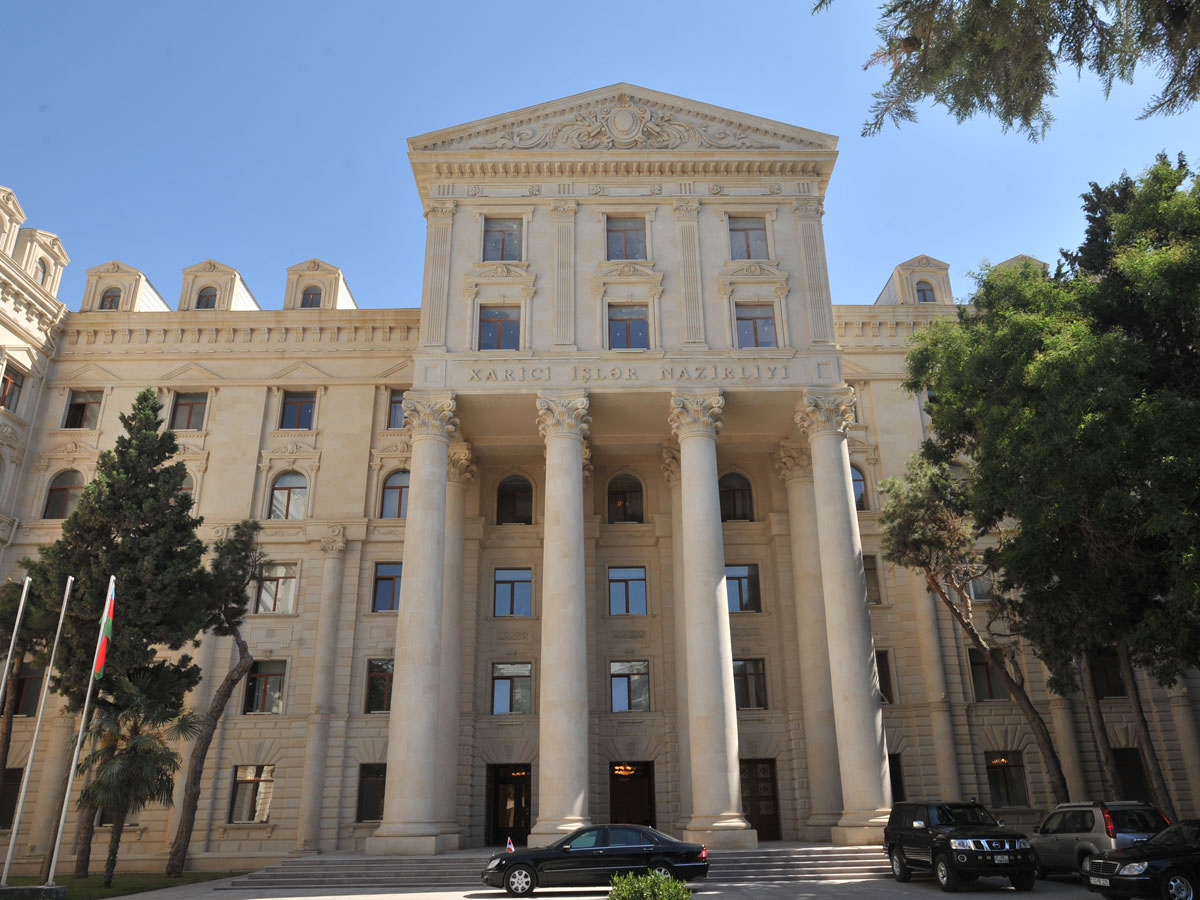Baku, Azerbaijan, Apr. 12
Trend:
The ceasefire can't be a guarantor of a sustainable peace in the Armenian-Azerbaijani Nagorno-Karabakh conflict, Azerbaijani Foreign Ministry spokesperson Hikmet Hajiyev told Trend.
"The Nagorno-Karabakh conflict is in the active military phase. The ceasefire can't be a guarantor of sustainable peace," he said, adding that the latest developments on the line of contact between Azerbaijani and Armenian armies proved that once again.
Following the recent escalation of the situation on the line of contact, the international community showed an unequivocal position on this issue: it is necessary to restore the ceasefire and continue the negotiation process on the comprehensive settlement of the conflict, according to the spokesperson.
Thereby, the international community reiterated that it recognizes Azerbaijan's territorial integrity, Hajiyev said.
Armenia has been isolated from the rest of the world due to its unconstructive position, he said, adding that dissatisfaction with the policy of the authorities is growing in this country and this can lead to serious cataclysms.
The entire international community, including the OSCE Minsk Group accepts the phased settlement of the Nagorno-Karabakh conflict, according to the spokesperson.
"The conflict's settlement in a single package form is impossible," he said. "The phased settlement first of all envisages the liberation of seven occupied districts surrounding Nagorno-Karabakh."
"The phased approach is possible in the process of liberation of these districts as well: in the first phase, five districts can be liberated, refugees and IDPs return to these districts, those territories are cleared of mines and the infrastructure is restored," he said, adding that Kalbajar and Lachin districts can be liberated at the next stage.
By pursuing political manipulation, Armenia raises the issue of creating a corridor, said Hajiyev, adding that in the case of liberating those districts and opening the borders, there will be no need to create a corridor.
He added that the status of Nagorno-Karabakh can be discussed at the final stage.
Azerbaijani community should return there and the status should be determined within Azerbaijan's borders, said Hajiyev.
He noted that in order to achieve all this, the OSCE Minsk Group members and Armenia should show political will.
On the night of April 2, 2016, all the frontier positions of Azerbaijan were subjected to heavy fire from the Armenian side, which used large-caliber weapons, mortars and grenade launchers. The armed clashes resulted in deaths and injuries among the Azerbaijani population. Azerbaijan responded with a counter-attack, which led to liberation of several strategic heights and settlements.
Military operations were stopped on the line of contact between Azerbaijani and Armenian armies on Apr. 5 at 12:00 (UTC/GMT + 4 hours) with the consent of the sides, Azerbaijan's Defense Ministry earlier said. Ignoring the agreement, the Armenian side again started violating the ceasefire.
The conflict between the two South Caucasus countries began in 1988 when Armenia made territorial claims against Azerbaijan. As a result of the ensuing war, in 1992 Armenian armed forces occupied 20 percent of Azerbaijan, including the Nagorno-Karabakh region and seven surrounding districts. The 1994 ceasefire agreement was followed by peace negotiations. Armenia has not yet implemented four UN Security Council resolutions on withdrawal of its armed forces from the Nagorno-Karabakh and the surrounding districts.






